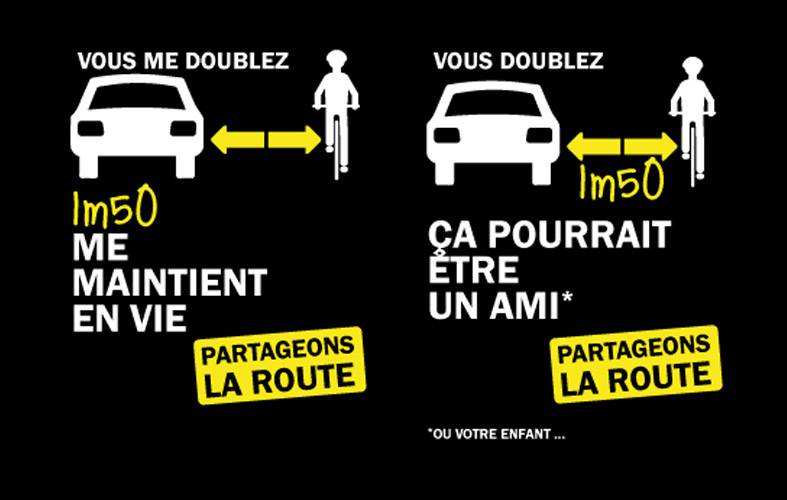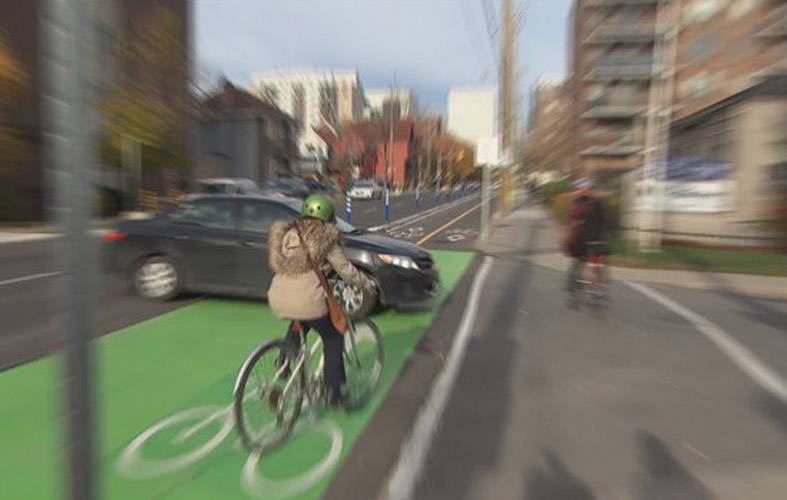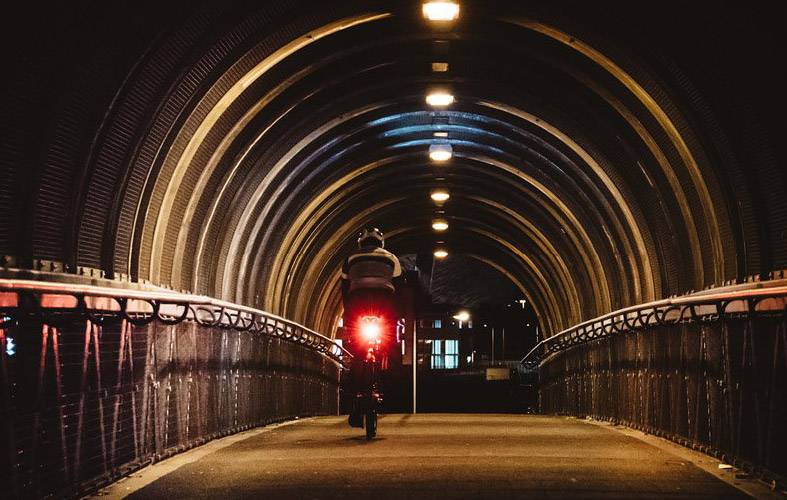The road is both the cyclist’s playground, and his greatest danger. At a time when more than ever the “road must be shared” between all users, it’s vital that you can easily be seen to maximise your safety. Two-thirds of accidents and one-third of all fatalities take place in an urban environment.
Many campaigns are underway, such as “My bike is my life” or the French Cycling Federation’s initiative to leave 1.5m when overtaking which has the enthusiastic support of the Ministry of Sports, ASO and many other sporting organisations who have created a greater awareness about the safety of cyclists and their protection on the road. Embrace the movement and ensure you have the appropriate equipment to keep yourself safe.

REALITY CHECK:
We may think that we’re less visible at night than during the day. However, accidents involving cyclists are more common during the day. You need to be readily visible night and day! In fact, the denser the traffic, the more difficult it becomes to see any cyclists.
Riding around town can be more complicated, particularly if there are no bike lanes. Accidents are more prevalent than in the countryside. But that doesn’t take account of accidents on isolated roads. Average driving speeds are higher and therefore the outcome of any accident is more severe. In 2014, cyclists accounted for 4.7% of those killed on French roads. This number is increasing every year, especially in open countryside.
Cyclists also need to pay attention to blind spots on buses and lorries. Intersections such as roundabouts or cross roads account for most cycling accidents due to the lack of respect for priorities and the slower trajectory of bicycles. Make yourself understood by other users with hand signals and, above all, respect the rules of the road!

THE LAW:
In short what does French legislation say about the road obligations of cyclists?
In low levels of light or visibility, cyclists should have a white (or yellow) headlight and a red rear light. Since 2008, you’re also obliged to wear a reflective vest at night. If you don’t abide by these regulations, you might be cautioned.

OUR ADVICE ON VISIBILITY:
Here are some tips to increase your safety for ensuring motorists can see you on the road. There are two things to keep in mind. Firstly, you must make your bike visible with some of the multitude of available accessories: powerful headlights whose intensity can be adjusted, frequency of blinking, the colour (re for rear, white for the front). Illuminated mudguards, illuminated bicycle pumps or reflective bottle cages are further simple accessories that can greatly help you avoid an accident. There is even a reflective spray to make your bike visible at night!


Secondly, you should, of course, make yourself more visible by wearing reflective clothing. Your shorts, jersey, or cycling jacket must include fabrics specially adapted for riding on the road. At G4, our innovations bearing the 4Secure label, aim to optimise your visibility thanks to four reflective zones strategically positioned on your body: the elbows, the back, the ankles and the waist. This guarantees 360 degree visibility for the cyclist when seen from all angles. The fabric we use is designed by the leading manufacturer of reflective textiles that has proven its know-how around the globe. Also, don’t forget about our accessories such as gloves, headbands and shoe cover which are all reflective to help ensure greater visibility. Safety has been one of our priorities since the start so that, more than ever, cyclists can safely share the road with other users.





No Comments
Leave a comment Cancel